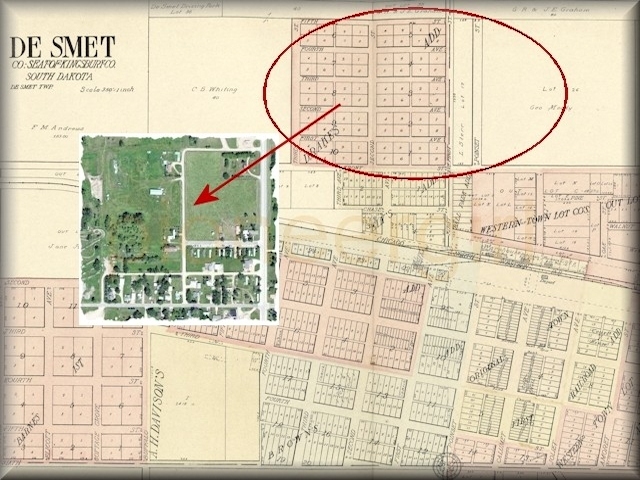Poverty Flat

Humorous nickname for Drake’s Addition to De Smet. — Webster, 1882
 Willard L. Seelye is building a substantial dwelling on “Poverty Flat.” That part of the city is becoming quite attractive north of Wilmarths. – The De Smet Leader, October 4, 1884
Willard L. Seelye is building a substantial dwelling on “Poverty Flat.” That part of the city is becoming quite attractive north of Wilmarths. – The De Smet Leader, October 4, 1884
 During one of her late summer buggy rides with Almanzo Wilder mentioned in These Happy Golden Years, Laura Ingalls Wilder mentions driving “across the railroad tracks” in De Smet “and on through Poverty Flat, the new part of town.” (See Chapter 21, “Barnum and Skip”)
During one of her late summer buggy rides with Almanzo Wilder mentioned in These Happy Golden Years, Laura Ingalls Wilder mentions driving “across the railroad tracks” in De Smet “and on through Poverty Flat, the new part of town.” (See Chapter 21, “Barnum and Skip”)
Poverty Flat was the humorous nickname for a ten-block subdivision and some surrounding property in De Smet, part of the NE 28-111-56, land that originally was part of Andrew J. Drake’s preemption claim, the quarter section just east of Eliza Jane Wilder’s homestead. It was platted as Drake’s Addition to De Smet on April 4, 1884, and surveyed by Samuel O. Masters, Kingsbury County surveyor at the time. Street names have changed (and some originally proposed roads were never used) since the area was platted; today it is that area to the east and west of Sherwood Avenue NW, north of Front Street NW and south of Garland Street. Highway 25 is the eastern boundary of the original addition. It includes Brewster Street NW and Charles Street NW as well.
To get to Poverty Flat, as was described in These Happy Golden Years and shown in the map portion above, Laura and Almanzo went north through town on Calumet Avenue (she called it Main Street), and across the railroad tracks. They then had to pass through an area of undeveloped railroad outlots, with Drake’s Addition in front of them and to their left. It wasn’t a straight shot.
Residents with connections to the Little House books who lived in the area north of the railroad tracks included Willard Seelye, George P. Wilmarth (father of grocer Edelbert Wilmarth), and Edwin Dow (he was married to Paul and George Cooley’s aunt). Although originally only Drake’s Addition was called Poverty Flat, much of the land north of the railroad tracks was known by that nickname in the early 19th century, including Eliza Jane Wilder’s homestead and the land to the east where the nursing home now stands. The name Poverty Flat was never meant to be uncomplimentary and it apparently originated with the property-owners themselves. The name may have been inspired by Bret Harte’s fiction of the California Gold Rush published in The Overland Monthly; check out his poem, “Her Letter.”

Poverty Flat (THGY 21)

